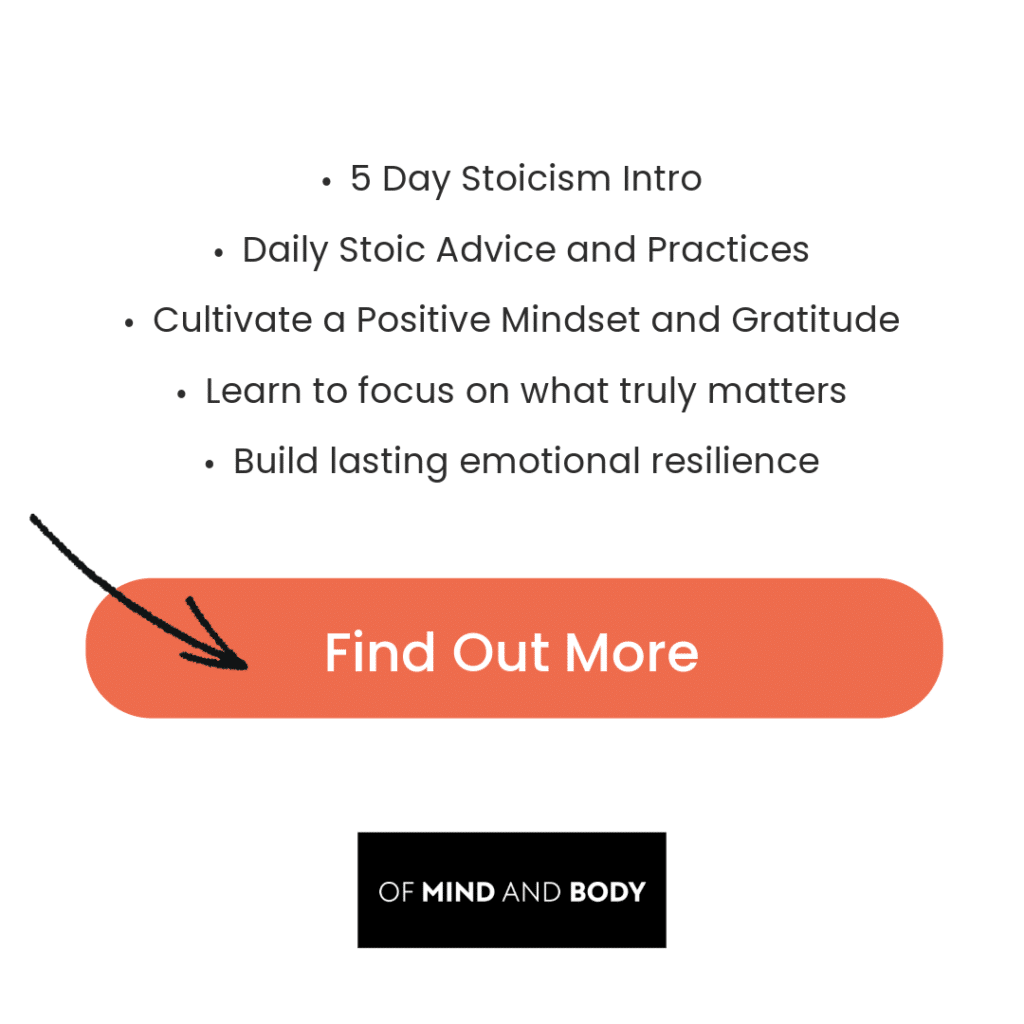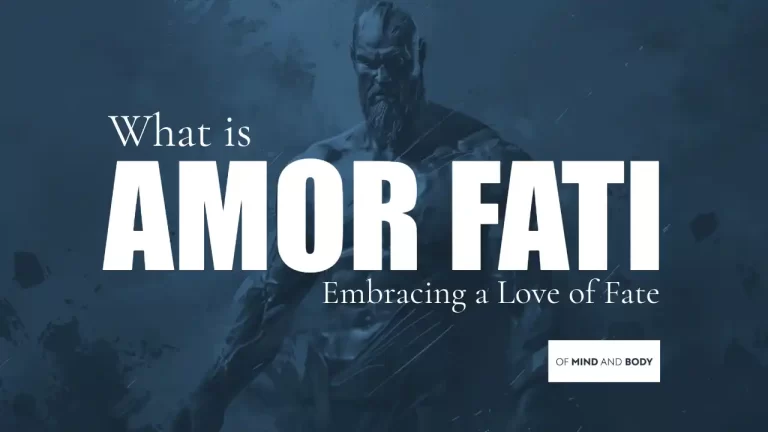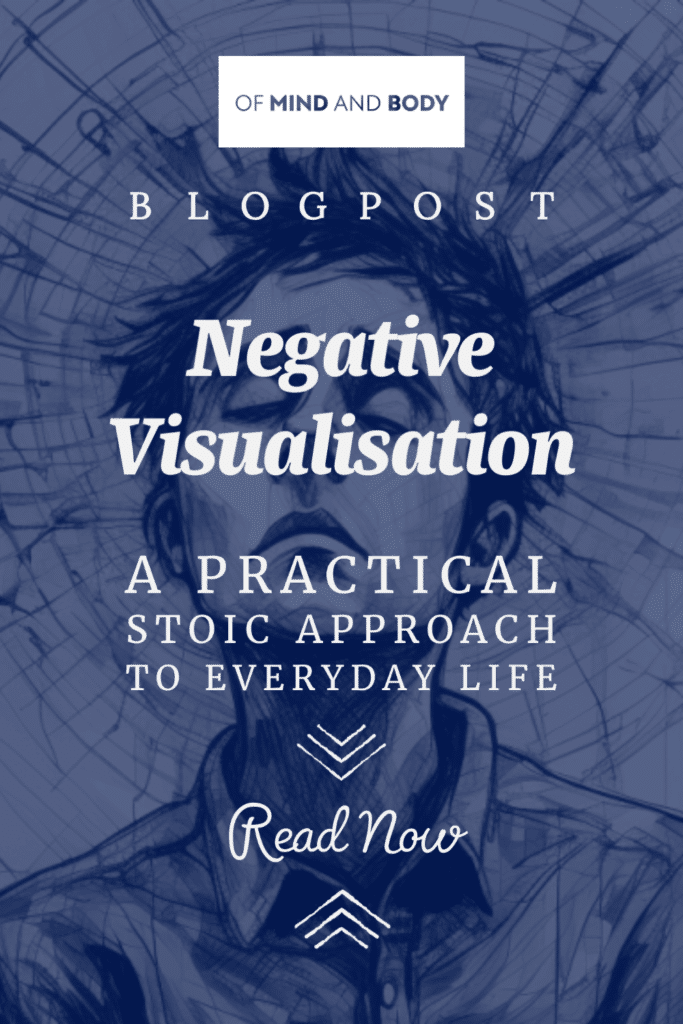
Introduction
In a world that often preaches the gospel of unbridled positivity, the concept of Stoic Negative Visualization might seem counterintuitive, if not outright pessimistic. Yet, this ancient practice holds a paradoxically optimistic promise for those who dare to explore its depths.
Imagine for a moment the worst-case scenarios in your life. Your job is gone, your relationships falter, and your health is dwindling. Now, how do you feel about your current situation? Surprisingly, contemplating these scenarios might not be as depressing as it sounds. In fact, it could be the key to a brighter, more grateful, and resilient future. This is the essence of Stoic Negative Visualization, a practice with ancient roots and modern relevance.
This article aims to shed light on Negative Visualisation, a Stoic exercise designed not to dampen spirits but to enhance the appreciation of life’s fleeting beauty. The key takeaways will offer insights into how embracing the potential for loss can, paradoxically, lead to a fuller, more resilient existence.
What is Stoic Negative Visualization?
The History of Negative Visualization.
Originating from the Stoic philosophers of ancient Greece and Rome, Negative Visualization, or “premeditatio malorum” (the premeditation of evils), is a practice intended to foster gratitude and fortitude. By contemplating the loss of what one values, Stoics believed one could diminish the impact of grief and increase appreciation for the present.
The Purpose of Stoic Negative Visualization.
Cultivating Emotional Equilibrium:
At its heart, Negative Visualization aims to balance our emotional responses to the vicissitudes of life. By periodically contemplating the loss of what we hold dear, we can temper the sharp edges of desire and fear that often skew our perception of happiness and fulfilment. This equilibrium is not a flatline of emotion but a dynamic balance that allows us to experience life’s highs and lows with a grounded perspective, ensuring that our happiness is not overly dependent on external circumstances.
Preparing the Mind for Inevitable Adversities:
Life, in its unpredictable flow, brings a spectrum of experiences, including those we would rather avoid. Stoic Negative Visualization serves as a mental rehearsal for adversity, akin to a fire drill. Just as a drill prepares individuals to respond calmly and effectively in the event of a fire, this practice prepares the mind to face life’s challenges with composure and resilience. By envisioning potential difficulties, we can develop strategies and mental fortitude to navigate them more skillfully when they arise.
Reducing Anxiety Over the Unknown:
Much of our anxiety stems from the fear of what might happen, a fear that often magnifies the unknown into a looming spectre of disaster. Negative Visualization demystifies the unknown by confronting it directly, reducing its power to induce fear. This confrontation is not a surrender to fatalism but an exercise in acknowledging and accepting the full range of life’s possibilities, thereby diminishing the anxiety that uncertainty can bring.
Enhancing Joy in the Everyday:
Perhaps one of the most paradoxical yet profound benefits of Negative Visualization is its ability to amplify joy and gratitude for the present moment. By contemplating the impermanence of our current circumstances, we can awaken a more acute appreciation for them. This practice highlights the transient beauty of life’s gifts, encouraging us to cherish them more deeply. The joy derived from this heightened appreciation is more robust and enduring because it is rooted in the awareness of life’s fleeting nature.

Fostering a Deeper Connection to Reality:
Stoic Negative Visualization encourages a truthful engagement with the world as it is, not as we wish it to be. This alignment with reality fosters a more authentic existence, where actions and decisions are informed by a clear-eyed assessment of the present and its possibilities. It cultivates a wisdom that sees beyond immediate desires and fears, guiding us toward choices that are in harmony with our deeper values and the common good.
In essence, the purpose of Stoic Negative Visualization is to enrich our lives by preparing us for its inevitable challenges, reducing our fears of the future, and deepening our appreciation for the present. It is a tool for developing resilience, wisdom, and a profound sense of gratitude, qualities that contribute to a well-lived life. Through this practice, we can navigate the complexities of human existence with grace, strength, and a joyful heart.
How Will Stoic Negative Visualization Help Me?
By regularly envisioning the worst-case scenarios in a controlled and contemplative manner, you can develop a more resilient mindset. This practice encourages a profound appreciation for what you have, reducing the fear of loss and making you more adaptable in the face of life’s uncertainties.
Personal Growth and Resilience:
By contemplating the potential loss or challenges you might face, you can develop a stronger sense of resilience. It helps you not to take things for granted and to be more adaptive and flexible in the face of adversity.
Mental Health:
It can paradoxically improve your mental health by reducing anxiety over the future. Knowing you’ve considered the worst outcomes and have thought about how to handle them can give you a sense of peace and reduce fear of the unknown.
Relationships:
Applying negative visualization to relationships can enhance your appreciation for the people in your life. By imagining life without them, you might find yourself valuing your time with them more and not sweating the small stuff.
Career and Work:
In your career, especially in areas requiring creativity and foresight, imagining the failure of a project or facing significant challenges can drive you to prepare better, innovate, and appreciate your achievements and progress.
Financial Stability:
By contemplating financial difficulties, you might become more prudent and wise in your financial decisions, leading to better savings habits and a more thoughtful approach to investments and expenditures.
Health and Well-being:
Thinking about potential health issues can inspire you to take better care of your physical and mental health today, leading to a healthier lifestyle and greater appreciation for your current state of health.
Personal Goals and Ambitions:
Visualizing not achieving your goals can be a powerful motivator. It can push you to work harder, make more strategic plans, and appreciate every small success on the way to your bigger goals.
How to Practise Negative Visualization
Delving deeper into the practical aspects of Stoic Negative Visualization reveals its accessibility and adaptability, making it a powerful tool for personal growth and emotional resilience. Here’s an in-depth look at what you need, how long it should take, and how often you should practise it.
What Do I Need?
A Quiet Space:
The essence of Negative Visualization is introspection, which flourishes in quietude. A space where you can be undisturbed for a few minutes is ideal. This doesn’t need to be a dedicated meditation room; a comfortable chair in your living room, a park bench, or even a quiet corner in a library can serve the purpose. The key is to find a place where your thoughts can roam freely without external interruptions.
A Few Moments of Your Time:
One of the most appealing aspects of Negative Visualization is its minimal time requirement. You don’t need to carve out large chunks of your day; just a few moments where you can be alone with your thoughts. This practice respects the busy nature of modern life and proves that meaningful self-reflection doesn’t require hours of isolation.
Willingness to Engage with Your Thoughts:
Perhaps the most crucial requirement is an open and willing mind. Negative Visualization is an exercise in confronting potentially uncomfortable truths about life’s impermanence and our vulnerabilities. It requires a readiness to face these realities, not with fear, but with the intention of learning and growing from them.
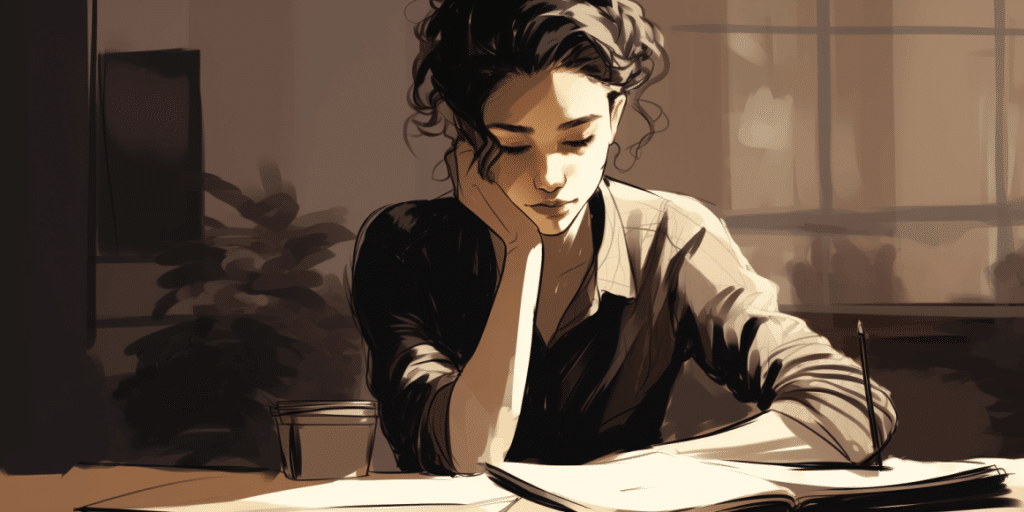
How Long Will It Take?
5-10 Minutes Daily:
The practice of Negative Visualization is remarkably efficient. Just 5-10 minutes of focused thought can yield significant insights and emotional benefits. During this time, you engage deeply with the concept of loss or adversity, allowing these contemplations to inform and enrich your perspective on life.
Adjustable Duration:
While 5-10 minutes is a good starting point, the duration of your practice can be tailored to fit your needs and schedule. Some days, you might find that a shorter session is all you can manage, while on others, you may wish to explore your thoughts more deeply. The flexibility of Negative Visualization ensures that it remains a practical and accessible tool, regardless of your daily commitments.
How Often Should I Practise Negative Visualization?
Daily Practice:
Incorporating Negative Visualization into your daily routine is ideal for cultivating a consistent habit. Regular engagement with this practice can help to gradually build your emotional resilience, making you better equipped to handle life’s challenges with grace and equanimity.
Value in Occasional Practice:
While daily practice is beneficial, even occasional engagement with Negative Visualization can be valuable. Life is unpredictable, and there may be times when daily practice isn’t feasible. In these instances, practising when you can still contribute to your overall well-being and provide you with a sense of grounding during turbulent times.
The practice of Stoic Negative Visualization is a testament to the power of simplicity. With nothing more than a quiet space, a few moments of time, and a willingness to confront and contemplate life’s uncertainties, you can embark on a journey of profound personal growth.
Whether practised daily or as your schedule allows, Negative Visualization offers a flexible and accessible path to greater emotional resilience and a deeper appreciation for the beauty of the present moment.
More Information on Stoic Negative Visualization
How Can Negative Visualisation Improve Decision-Making?
At its core, Negative Visualization is a tool for mental preparation, allowing individuals to explore potential outcomes, including the less desirable ones, before they occur. This practice can significantly impact decision-making processes in several ways:
1. Fostering Emotional Resilience:
By mentally rehearsing adverse outcomes, you gradually desensitise yourself to the impact of negative events. This emotional resilience enables you to face challenging decisions with a calm and composed mindset, reducing the likelihood of being swayed by fear or anxiety. When you’re not hindered by the fear of what could go wrong, you’re more likely to make decisions based on logic and reason rather than emotion.
2. Enhancing Risk Assessment:
Negative Visualization encourages you to consider the full spectrum of possible outcomes, including the worst-case scenarios. This comprehensive approach to risk assessment ensures that you’re not overly optimistic about the potential benefits of a decision without considering its possible pitfalls. By acknowledging and preparing for the worst, you can develop strategies to mitigate risks, making your decisions more robust and informed.
3. Improving Problem-Solving Skills:
Regular practice of Negative Visualization can sharpen your problem-solving skills. By contemplating various negative outcomes, you’re essentially engaging in a form of mental rehearsal for dealing with challenges. This can help you identify potential solutions and strategies ahead of time, making you more adept at navigating difficulties when they arise.

4. Cultivating Gratitude and Perspective:
Negative Visualization helps in appreciating the current state of affairs by highlighting how situations could be worse. This sense of gratitude can influence decision-making by fostering a more balanced perspective. Decisions are then made with a clearer understanding of what’s truly valuable and important, prioritising outcomes that preserve or enhance these values.
5. Encouraging Proactive Behaviour:
By contemplating the potential downsides of a decision, you’re more likely to take proactive steps to avoid undesirable outcomes. This forward-thinking approach means that decisions are not just reactive but are made with a view to shaping a desired future, thereby increasing the chances of achieving positive results.
6. Reducing Regret:
Engaging in Stoic Negative Visualization can also minimise feelings of regret after a decision is made. By having already considered the worst outcomes and accepting the possibility of their occurrence, you’re less likely to experience regret if things don’t go as planned. This acceptance fosters a more resilient mindset, ready to learn from experiences rather than being crippled by them.
Negative Visualization equips individuals with a more nuanced understanding of the potential consequences of their decisions. This leads to a decision-making process that is not only more informed and balanced but also more aligned with long-term goals and values. By integrating this ancient Stoic practice into modern life, we can navigate the complexities of contemporary decision-making with wisdom, resilience, and foresight.
Common Misconceptions About Negative Visualization
It’s a Pessimistic Practice:
One of the most prevalent misconceptions about Negative Visualization is that it encourages a pessimistic outlook on life. Critics often mistake it for a practice focused on dwelling in fear of the worst possible outcomes. However, the essence of Negative Visualization is not pessimism but preparedness. It’s about acknowledging the potential for adverse events in a way that enhances our ability to appreciate the present and strengthens our resilience against future challenges.
It Leads to Morbidity and Anxiety:
Another common misunderstanding is that regularly thinking about negative outcomes can lead to increased anxiety and a morbid fixation on what could go wrong. In reality, Negative Visualization serves the opposite purpose. By contemplating potential losses or difficulties, we can actually reduce the anxiety they cause. This practice helps desensitise us to fear of the unknown and makes us more emotionally robust, enabling us to face life’s uncertainties with a calm and steady mind.
It’s About Expecting the Worst to Happen:
Some people believe that Negative Visualization is about constantly expecting the worst to happen, which could lead to a life filled with unnecessary worry and stress. However, the practice is not about expectation but preparation. It’s a strategic exercise to mentally explore how one might cope with difficult situations, thereby reducing the shock or impact if they do occur. This mental rehearsal fosters a sense of inner peace and confidence, knowing that we are better equipped to handle whatever life throws our way.
It Diminishes Happiness and Contentment:
There’s a notion that focusing on negative possibilities could diminish one’s happiness and contentment with the present. On the contrary, Negative Visualization can significantly enhance gratitude for the present moment. By recognising that our current state of happiness, health, or even material possessions are not guaranteed, we can deepen our appreciation for them. This heightened sense of gratitude makes our daily lives more fulfilling and joyful.
It’s a Form of Self-Torment:
Finally, some might view Negative Visualization as a form of self-torment, unnecessarily torturing oneself with thoughts of loss and adversity. This perspective misses the practice’s empowering aspect: it’s a tool for building mental strength and flexibility. Far from being a form of self-torment, Negative Visualization is a practice in self-empowerment, enabling individuals to live more vibrant, resilient lives in the face of life’s inevitable ups and downs.
Negative Visualization is profoundly misunderstood by those who see it as a negative or defeatist practice. Its true purpose is to cultivate a mindset that appreciates the present, prepares for the future, and embraces life’s complexities with strength and grace. By clarifying these misconceptions, we can appreciate Negative Visualization for what it truly is: a pathway to greater emotional resilience, gratitude, and a deeper, more meaningful engagement with life.
5 Stoic Quotes on Negative Visualization:
“Begin each day by telling yourself: Today I shall be meeting with interference, ingratitude, insolence, disloyalty, ill-will, and selfishness…”
Marcus Aurelius
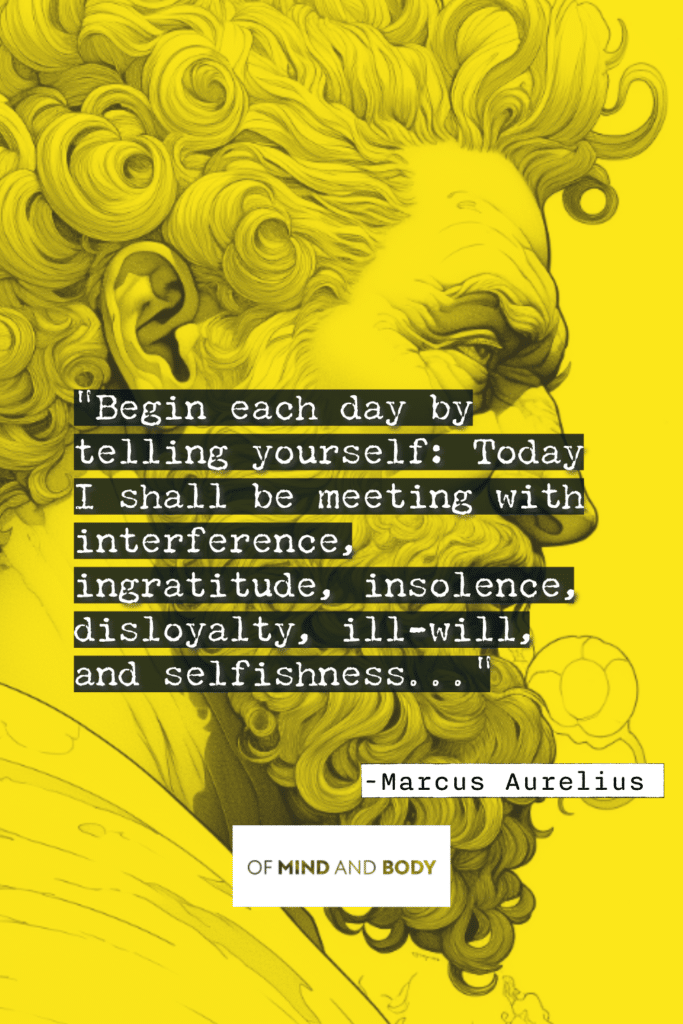
The Wisdom Behind the Words
This quote encourages the anticipation of daily challenges and negative interactions, which is a core aspect of Visualization Visualisation. By mentally preparing for these adversities, we can approach our day with a sense of preparedness and resilience, reducing the emotional impact they have on us.
“He robs present ills of their power who has perceived their coming beforehand.”
Seneca

The Wisdom Behind the Words
Seneca highlights the essence of Negative Visualization here: by contemplating potential difficulties before they occur, we diminish their ability to disrupt our peace of mind. This foresight allows us to face challenges with a calm and collected demeanour, effectively reducing their perceived severity.
“Fortune falls heavily on those for whom she’s unexpected. The one always on the lookout easily endures.”
Seneca
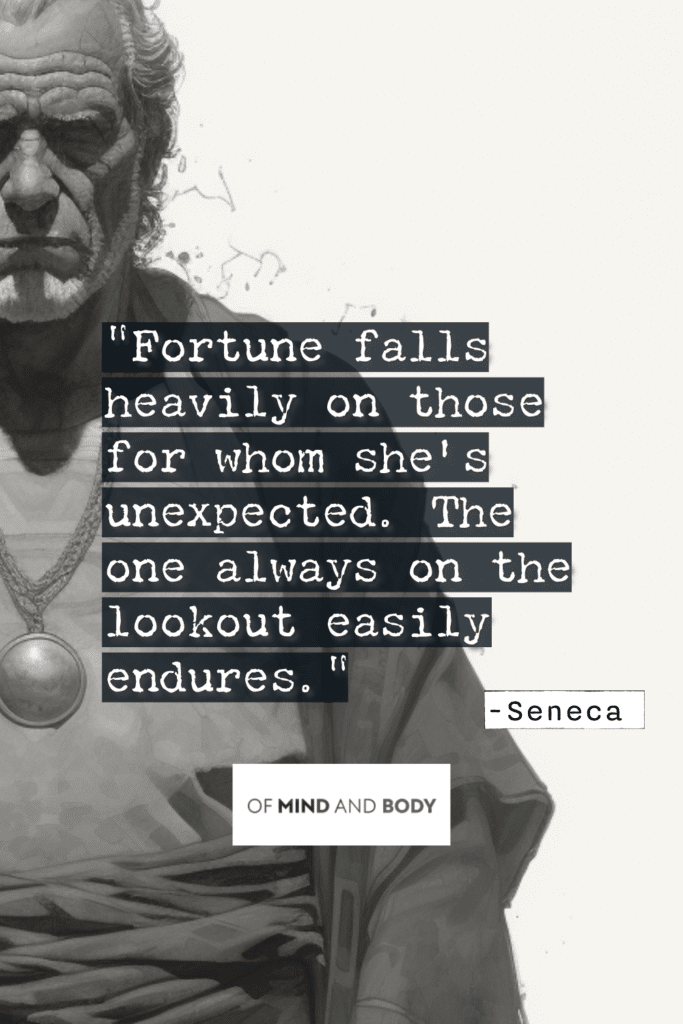
The Wisdom Behind the Words
This quote underscores the value of readiness and vigilance. Negative Visualization teaches us to expect the unexpected, thereby softening the blow of misfortune. Those who practice this are better equipped to handle the unpredictability of life with grace, as they have mentally rehearsed resilience in the face of adversity.
“Don’t seek for everything to happen as you wish, but rather wish that everything happens as it actually will—then your life will flow well.”
Epictetus
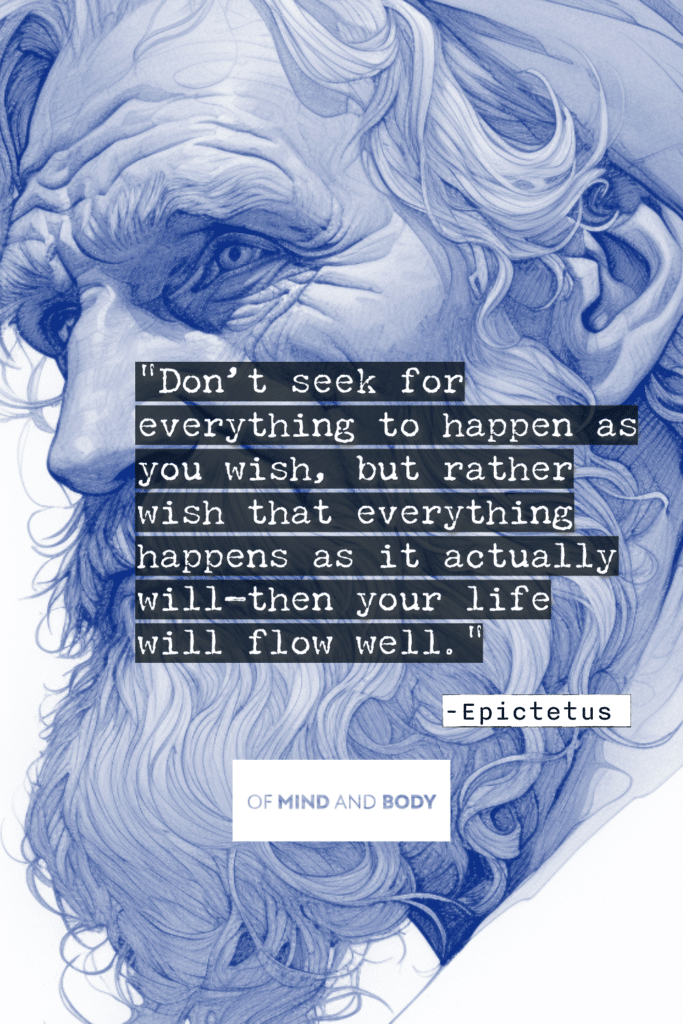
The Wisdom Behind the Words
Epictetus advises acceptance of life’s reality over wishful thinking, a principle central to Negative Visualization. By aligning our desires with the reality of what may happen, rather than what we hope will happen, we cultivate a mindset of acceptance and flexibility, leading to a more harmonious and less resistant experience of life.
“If you want to improve, be content to be thought foolish and stupid.”
Epictetus
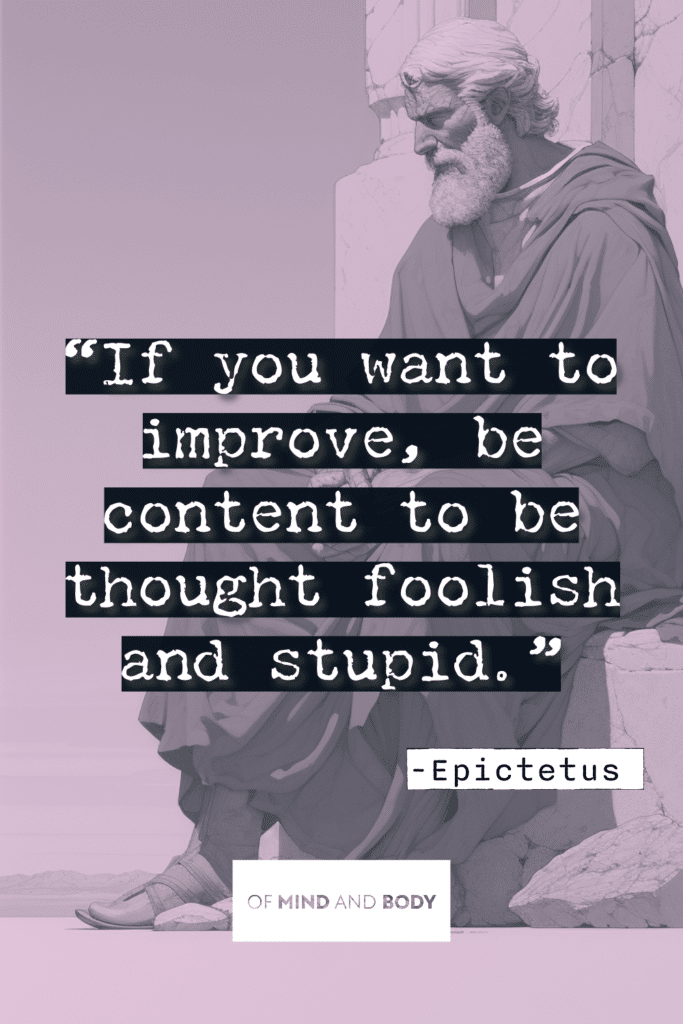
The Wisdom Behind the Words
This quote relates to Negative Visualization by emphasising the importance of humility and the willingness to embrace discomfort for the sake of growth. Just as Negative Visualisation involves confronting uncomfortable truths about life’s impermanence and our vulnerabilities, being open to criticism or misunderstanding is crucial for personal development. It’s a reminder that growth often requires us to step outside our comfort zones and face potential negative judgements from others.
Final Thoughts
Negative Visualization is not about dwelling on the dark side of life but about illuminating the value of what we have, right here and now. By preparing for the worst, we can actually enhance our enjoyment of the best, leading to a more balanced, grateful, and resilient existence. The key takeaways from this practice are profound: a deeper appreciation for life’s gifts, improved decision-making, and a fortified emotional resilience against adversity.
As we conclude, consider this an invitation to explore the rich, transformative potential of Stoic Negative Visualization. For those intrigued by the promise of a more balanced and appreciative mindset, sign up for our 5-day introduction to Stoicism. Embrace the wisdom of the ancients, and discover how an unlikely practice can illuminate the path to a brighter, more resilient future.




